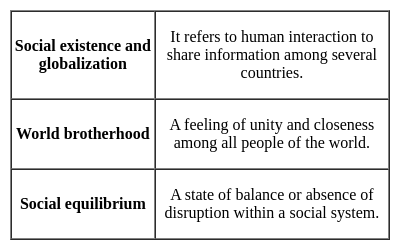Software Development Exam > Software Development Tests > Test: Inclusive Education (Concept & Understanding) - Software Development MCQ
Test: Inclusive Education (Concept & Understanding) - Software Development MCQ
Test Description
10 Questions MCQ Test - Test: Inclusive Education (Concept & Understanding)
Test: Inclusive Education (Concept & Understanding) for Software Development 2025 is part of Software Development preparation. The Test: Inclusive Education (Concept & Understanding) questions and answers have been prepared
according to the Software Development exam syllabus.The Test: Inclusive Education (Concept & Understanding) MCQs are made for Software Development 2025 Exam.
Find important definitions, questions, notes, meanings, examples, exercises, MCQs and online tests for Test: Inclusive Education (Concept & Understanding) below.
Solutions of Test: Inclusive Education (Concept & Understanding) questions in English are available as part of our course for Software Development & Test: Inclusive Education (Concept & Understanding) solutions in
Hindi for Software Development course.
Download more important topics, notes, lectures and mock test series for Software Development Exam by signing up for free. Attempt Test: Inclusive Education (Concept & Understanding) | 10 questions in 12 minutes | Mock test for Software Development preparation | Free important questions MCQ to study for Software Development Exam | Download free PDF with solutions
Test: Inclusive Education (Concept & Understanding) - Question 1
An inclusive education system provides children with a fair opportunity _______ .
Detailed Solution for Test: Inclusive Education (Concept & Understanding) - Question 1
Test: Inclusive Education (Concept & Understanding) - Question 2
Following are the barriers in inclusive education, EXCEPT:
Detailed Solution for Test: Inclusive Education (Concept & Understanding) - Question 2
Test: Inclusive Education (Concept & Understanding) - Question 3
Identify the model of inclusive education in which a student is included during regular education classroom instruction to provide the student appropriate interaction with non-disabled peers. The student is given shortened assignment.
Detailed Solution for Test: Inclusive Education (Concept & Understanding) - Question 3
Test: Inclusive Education (Concept & Understanding) - Question 4
Which one of the following is least important in an inclusive classroom?
Detailed Solution for Test: Inclusive Education (Concept & Understanding) - Question 4
Test: Inclusive Education (Concept & Understanding) - Question 5
Which is the most appropriate method of co-teaching a teacher should use while teaching in an inclusive classroom?
Detailed Solution for Test: Inclusive Education (Concept & Understanding) - Question 5
Test: Inclusive Education (Concept & Understanding) - Question 6
At present, the emphasis is on inclusive education. The objective behind inclusive education is-
Detailed Solution for Test: Inclusive Education (Concept & Understanding) - Question 6
Test: Inclusive Education (Concept & Understanding) - Question 7
Institutional initiative for inclusive education can be evidenced when ______.
Detailed Solution for Test: Inclusive Education (Concept & Understanding) - Question 7
Test: Inclusive Education (Concept & Understanding) - Question 8
What will be your effort for quality based inclusive education for all?
Detailed Solution for Test: Inclusive Education (Concept & Understanding) - Question 8
Test: Inclusive Education (Concept & Understanding) - Question 9
Inclusive education refers to a school education system that
Detailed Solution for Test: Inclusive Education (Concept & Understanding) - Question 9
Test: Inclusive Education (Concept & Understanding) - Question 10
Inclusive Education is based on the principle of _______
Detailed Solution for Test: Inclusive Education (Concept & Understanding) - Question 10
Information about Test: Inclusive Education (Concept & Understanding) Page
In this test you can find the Exam questions for Test: Inclusive Education (Concept & Understanding) solved & explained in the simplest way possible.
Besides giving Questions and answers for Test: Inclusive Education (Concept & Understanding), EduRev gives you an ample number of Online tests for practice
Download as PDF



















